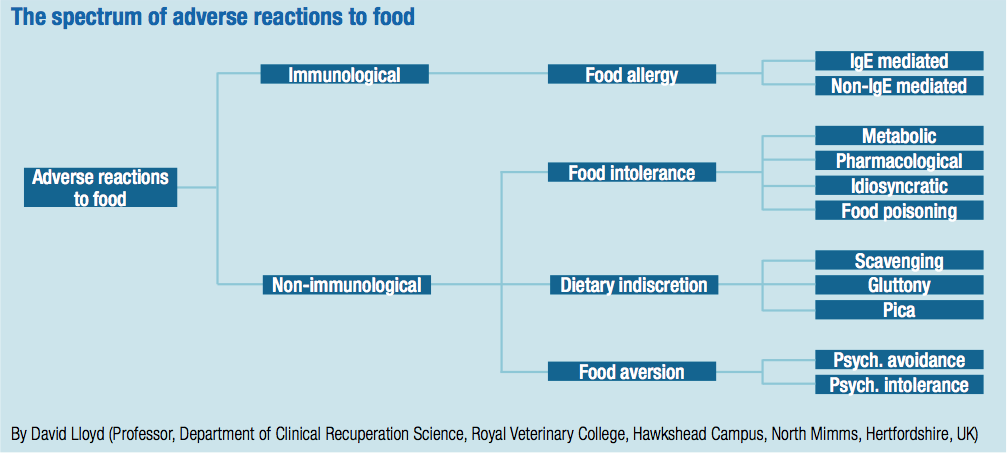Your question.
Food allergy: what to know?
Food allergy (FA) is an uncommon problem in cats and dogs and it can start at any age. Food allergy is defined as “all immune-mediated reactions following food intake,” in contrast with food intolerance (FI), which is non-immune-mediated. The exact prevalence of FA in dogs and cats remains unknown. Other sources report that around 5-10% of pets suffer from food intolerances but not food allergies. There is no breed, sex or age predilection, although some breeds are commonly affected. Before the onset of clinical signs, the animals have been fed the offending food components for at least two years, although some animals are less than a year old. So about 70 percent of affected pets develop allergies to food ingredients that they have been fed for a long time, usually more than two years. FA is a non-seasonal disease with skin and/or gastrointestinal disorders. Pruritus is the main complaint and is mostly corticoid-resistant. In 20-30% of the cases, dogs and cats have concurrent allergic diseases (atopy/flea-allergic dermatitis). Food ingredients most commonly responsible for allergies are beef, chicken, fish, eggs, pork, maize, soya and milk. Pets are most often allergic to wheat (e.g. biscuits) and beef. The tendency to develop allergies is genetically determined.
Can Viyo Recuperation be used for animals with food allergies? Have you received any reports of allergic reactions to Viyo Recuperation? and if any, what ingredients caused the reaction?

Yes. In 99% of cases, Viyo Recuperation can be used as a support. There are no reports or cases where Viyo Recuperation might have caused any form of allergy or allergic reaction. Food allergies are very often overrated because allergies in general form a very small part of the causes of skin disorders, only 1%. On top of this, the origin of the allergies is very rarely investigated because it requires a complex and expensive operation (Intra dermal tests).
In many cases it can also be a “Food Adverse Reaction” rather than food allergy (see table).
So it is important to have a correct diagnosis, and in case of a food allergy, to identify the source of it.

FOOD ALLERGY WITH DOGS.
2/3rd of the patient dogs have been fed with beef, dairy products or wheat gluten. 25% of the reported food allergies were also linked to chicken, chicken eggs, lamb or soy. Allergies with dogs are rarely linked to corn, pork, rice or fish. In case chicken allergy is identified, better not give Viyo Recuperation.
FOOD ALLERGY WITH CATS.
With 80% of cats, the allergies were linked to beef, dairy products or fish (mackerel and tuna).
25 – 48% of the patient dogs and 50% of the patient cats showed sensitivity to one or more food allergies. In case chicken allergy is identified, better not give Viyo Recuperation.